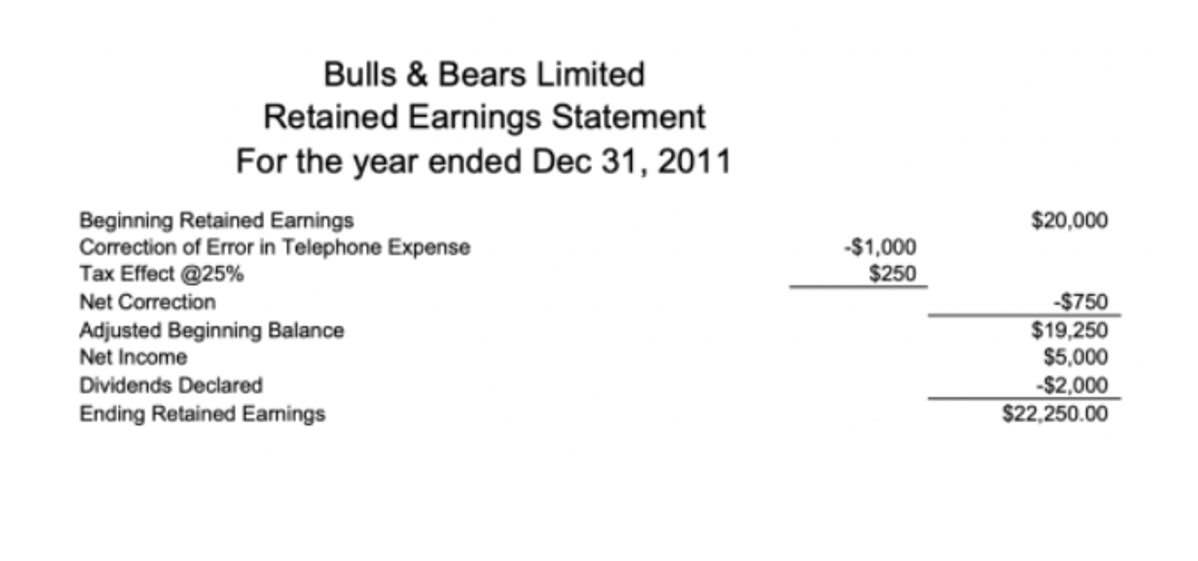New Fortress Energy Announces Second Quarter 2024 Results New Fortress Energy

Distributable Cash Flow is not intended to represent cash flows from operations or net income as defined by U.S. GAAP and is not necessarily comparable to similarly titled measures reported by other companies. Unless you went to business school—or at least took an accounting or finance course—you’ve probably never given much thought to financial statements such as balance sheets, income statements, or statements of cash flow, right?
What’s a Good Profit Margin for Your Small Business?
Anon-public corporation can use cash basis, tax basis, or fullaccrual basis of accounting. Cash and tax basisare most likely used only by sole proprietors or smallpartnerships. When the retained earnings balance drops below zero, thisnegative or debit balance is referred to as a deficit inretained earnings. Stockholders’ equity is also referred to as shareholders’ or owners’ equity. Conceptually, stockholders’ equity is useful as a means of judging the funds retained within a business.
What Is the Difference Between Retained Earnings and Dividends?
It is hard to know the increase in retained earnings for any given year unless one looks at the balance sheet for the previous period. The picture below shows that retained earnings increased by $40,000 ($120,000 – $80,000) from 2021 to 2021. It is the sum of net income a company has generated since inception minus its dividends. It can demonstrate assets minus liabilities and retained earnings significant profitability and increased earnings to the analysts. Despite this, not using its earnings balance may not be a good thing as this money loses value over time. It can also be calculated without knowing its opening value by subtracting all the dividend payments made during the company’s life from its total net income.
Components of Stockholders Equity

Factors such as an increase or decrease in net income and incurrence of net loss will pave the way to either business profitability or deficit. The Retained Earnings account can be negative due to large, cumulative net losses. The RE balance may not always be a positive number, as it may reflect that the current period’s net loss is greater than that of the RE beginning balance. Alternatively, a large distribution of dividends that exceed the retained earnings balance can cause it to go negative. Additional paid-in capital does not directly boost retained earnings but can lead to higher RE in the long term.
- For instance, the first option leads to the earnings money going out of the books and accounts of the business forever because dividend payments are irreversible.
- Retained earnings are usually considered a type of equity as seen by their inclusion in the shareholder’s equity section of the balance sheet.
- Retained Earnings are listed on a balance sheet under the shareholder’s equity section at the end of each accounting period.
- The balance sheet shows this increase is due to a decrease in liabilities larger than the decrease in assets.
- Positive shareholder equity indicates that the company’s assets exceed its liabilities, whereas negative shareholder equity suggests that its liabilities exceed its assets.
- We can use this information to guide our own individual investment decisions while keeping in mind various debt and equity products.
types of shareholders’ equity
Browse the Journal of Accountancy website for articles and cases of prior period adjustment issues. The balance sheet is a very important financial statement for many reasons. It can be looked at on its own and in conjunction with other statements like the income statement and cash flow statement to get a full picture of a company’s health. On the right side, the balance sheet outlines the company’s liabilities and shareholders’ equity. Instead of paying cash, shares are issued to current shareholders for free against a portion of retained earnings, which gets added to the common stock pool.
- Although the balance sheet always balances out, the accounting equation can’t tell investors how well a company is performing.
- Accountants call this the accounting equation (also the “accounting formula,” or the “balance sheet equation”).
- The equity capital/stockholders’ equity of a firm can also be considered as its net assets.
- This account contains all the surplus funds that a company has retained throughout its existence.
- Prior period adjustments are corrections of errors that appeared on previous periods’ financial statements.
The second option is to record a journal entry that transfers part of the unappropriated retained earnings into an Appropriated Retained Earnings account. To illustrate, assume that on March 3, Clay Corporation’s board of directors appropriates $12,000 of its retained earnings for future expansion. The company’s retained earnings account is first renamed as Unappropriated Retained Earnings. The journal entry decreases the Unappropriated Retained Earnings account with a debit and increases the Appropriated Retained Earnings account with a credit for $12,000. Retained earnings are calculated by first adding the beginning retained earnings (from the previous year’s balance sheet) to the net income or loss and subtracting dividends paid to shareholders.
Company Life Cycle

However, U.S. GAAP is not the only full accrual method available to non-public corporations. Two alternatives are IFRS and a simpler form of IFRS, known as IFRS for Small and Medium Sized Entities, or SMEs for short. In 2008, the AICPA recognized the IASB as a standard setter of acceptable GAAP and designated IFRS and IFRS for SMEs as an acceptable set of generally accepted accounting principles.
